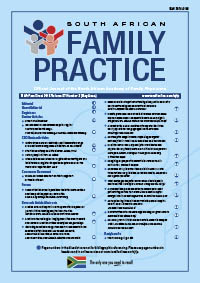A cross-sectional profile and outcome assessment of adult patients triaged away from Steve Biko Academic Hospital emergency unit
Keywords:
Triage, South African Triage Scale (SATS), Medical Early Warning Score (MEWS), Emergency Unit (EU)
Abstract
Background: Overcrowding is a global problem in emergency medicine. This study examined an approach to this problem at a central hospital. Methods: A prospective observational study was done to provide a cross-sectional profile of patients triaged away from the emergency unit (EU) and to evaluate their outcome by telephonic survey. Results: 549 patients were triaged away during the study period. There was no significant difference in the number of male and female patients in the sample. Female patients were significantly younger than males (p = 0.0399). The most common complaint was abdominal pain followed by extremity complaints. Females complained more of abdominal pains (OR 1.87, 95% CI (1.13-3.12); p 0.0094), and males had more extremity complaints (OR 2.42, 95% CI (1.45 - 4.09); p = 0.0003). Only 42 patients were available for telephonic follow-up; 66% of them received care on the same day at another treatment facility. No patients that were available for follow up had died due to their presenting complaint or needed to be referred back. Conclusions: The typical patient triaged away was a 40-year-old female from the hospital’s referral area with abdominal pain. This study indicated that the method of triage may be safe to determine which patients can be deferred from a central hospital to a lower level of care. There were various limitations to this study; hence, the findings of this study should be interpreted with caution. (Full text available online at www.medpharm.tandfonline.com/ojfp) S Afr Fam Pract 2015; DOI: 10.1080/20786190.2015.1024013
Published
2015-07-12
Section
Research Articles
By submitting manuscripts to SAFP, authors of original articles are assigning copyright to the South African Academy of Family Physicians. Copyright of review articles are assigned to the Publisher, Medpharm Publications (Pty) Ltd, unless otherwise specified. Authors may use their own work after publication without written permission, provided they acknowledge the original source. Individuals and academic institutions may freely copy and distribute articles published in SAFP for educational and research purposes without obtaining permission.

